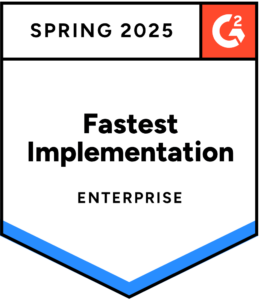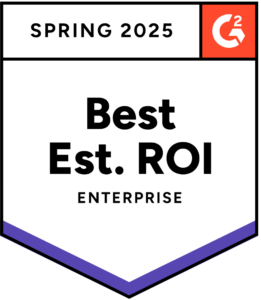Year-End Close: The Big Test. The Proving Ground.
Blog post
Share
Bill Marchionni, Account-to-Report Advisory Global Program Leader, The Hackett Group
Year-End Close: It All Must Come Together.
It all must come together at year-end. And somehow it does. But the big questions are:
- How did it all come together?
- Are we improving, growing, and developing more capabilities?
- Did we take on the right amount of risk?
- Are we, and others, confident in the work we produced and approved?
- Do we have repeatable and sustainable processes?
Companies that close, consolidate and report quickly and accurately, and with great insight, enjoy the confidence of the Board of Directors and the public. These companies can focus more intently, and more quickly, on business needs and competitive responses.
Closing the books quickly, accurately and with little churn should be a foundational capability. However, according to The Hackett Group®, fewer than 10% of companies have an optimized closing process.
Those with a sub-optimized closing process(es) typically have:
- Systems integration issues
- Limited insight and understanding into transaction processing and financial reporting risks
- Unnecessary manual task activity (e.g., processing, controls, reporting)
- A lack of best practices in its service delivery model
- Non-standardized processes and practices
- Difficulty monitoring, understanding, and improving business process performance
On the other hand, leading companies have designed and implemented a finance and accounting service delivery model that allows their finance and accounting professionals to focus on decision making and decision support.
The Typical Year-end Close: Not Pretty.
Data from The Hackett Group® paints a picture – a picture of companies with high levels of manual processing, and with manual controls, in their closing process:
- Only 41% of record to report tasks are automated
- Only 19% of account reconciliations are fully automated vs. 60%+ for the leading companies
- 80% of journal entries are automated vs. 96% for the leading companies
- 28% of manual journal entries are correcting entries
Manual processes and tasks bring unnecessary risk to financial and management reporting and to the safeguarding of assets.
Manual work also leads to underutilized talent. Finance and accounting professionals want professional growth. They are also time and resource constrained.
Therefore, it is incumbent upon finance and accounting leaders to transform the record to report service delivery model by:
- Reducing controllable complexity
- Re-Designing processes based on a sophisticated identification and assessment of risk
- Automating tasks according to emerging and leading best practices
- Creating capacity for record to report professionals to focus on decision making
- Ensuring the work performed by the team drives new skills and capability development
There is Power in an Automated Year-End Close.
Leading companies are bringing important concepts and practices from touchless flow through processing into the record to report space.
An automated year end close will be characterized, in part, by the following:
- Clear delineation of roles and responsibilities (e.g., RACI model)
- Transaction processing integration and automation down to the task level
- Automated controls (performance and monitoring)
- Real time visibility into close activities
- Policies and practices based on sophisticated assessments of balance sheet risk
- Strong data governance
Benefits from an automated year end close are significant – in type, and in the magnitude of the benefits realized. Benefits include:
- Improved agility and greater capacity
- Improved efficiency (e.g., resource leverage, cycle times)
- Greater accuracy and less rework
- More valuable data visibility, and enhanced reporting
- An improved control environment
- Enhanced skills and capability development
Overcome Challenges and Resistance.
The #1 transformational focus for Finance executives, according to The Hackett Group® , is investing in and accelerating digital transformation. This has been the case for several years. The success of an organization’s digital transformation strategic initiative(s) will be dependent, in large part, on the automation decisions they make and the success of their integrations between systems.
The only constant is change. Or so the saying goes. The unfortunate corollary is that most people do not like change. The uncertainty it creates. This becomes a big challenge for finance and accounting leaders who are looking to drive change, whether that be through continuous improvement or through larger scale transformational initiatives and projects.
Overcoming challenges and resistance to change are make or break. Important steps include:
- Executive Sponsorship – share the vision; obtain and protect the funding; articulate the “Why?” and the “Why Now?”
- Engage, Engage, Engage – create a vision as to how the change will benefit the finance and accounting professional (e.g., value-added work; important interactions with business leaders; greater personal visibility; fewer, more predictable hours; marketable skills)
- Change Management Approach – structured, integrated with project management
- Communications – Complete. Candid. Frequent.
- Resources – dedicated change management resources
Final Thought.
Year-end close is The Big Test. It tests all the decisions made around people, processes and technology. Decisions on risk, materiality, standardization, automation, the control environment. The list goes on. And this test exposes the impacts of decisions not made. And investments sub-optimized.
No matter the results of this test, whether you scored high or low, or somewhere in between, it is imperative to remain focused on the digital transformation of the close process. To create agility and capacity. And to enhance professional opportunities.
Embed continuous improvement principles. Make changes. Stay committed to digitally transforming. The competitive environment demands nothing less.






